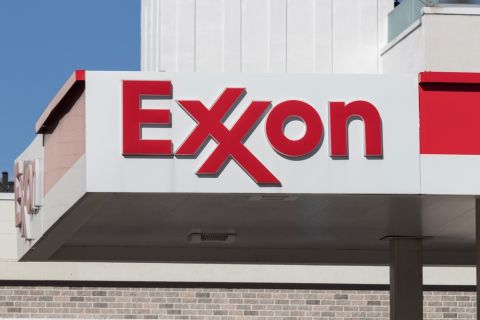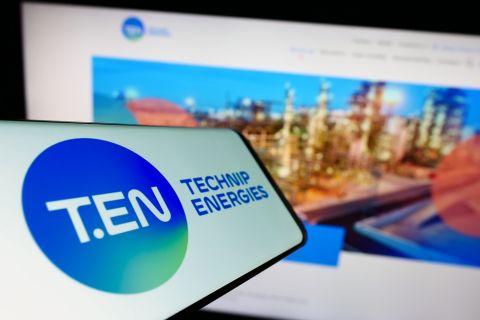Libya offers great potential for new oil strikes because only about a quarter of its oil and gas acreage is covered by exploration licenses, and most of the country has not been explored using modern techniques. Additionally, it offers low-cost, high-quality production, it is close to European markets, and it has a well-developed infrastructure.
The country aims to increase its oil-production capacity from 1.6 million barrels per day at present to 2 million during 2008-2010, and to 3 million by 2015. Foreign investments of as much as $30 billion will be needed to reach these targets.
Analysts expect the country to offer more than 100 new areas containing at least 360 blocks in the next few years.
1 Canada
Calgary-based EnCana Corp. and the province of Nova Scotia have reached an offshore strategic energy agreement that establishes the framework for the potential development of Deep Panuke natural gas field, about 250 kilometers offshore Halifax. During the past three years, EnCana has been assessing Deep Panuke's resource potential. This year, the company plans to file a Deep Panuke project description with the Canadian Environmental Assessment Agency and a development-plan application with the Canada-Nova Scotia Offshore Petroleum Board.
2 Venezuela
Brazilian state oil company Petrobras has teamed with Venezuela's Petroleos de Venezuela SA on a $3.5-billion Orinoco Belt extra-heavy-oil project designed to produce 200,000 bbl. of oil from the Carabobo 1 block. Early production is slated for 2009 and full commercial production by 2011. The recovery process planned for the project will refine the 7.5-degree-gravity oil to 16-degree gravity. Reserves are 5 billion bbl. of oil. The companies plan to drill 14 exploratory wells on the block before year-end.
3 Peru
Partners in giant Camisea Field in central Peru have started drilling the first of six wells on adjacent Block 56 in Pagoreni Field, according to Business News America. The operator is Argentina's Pluspetrol, and partners are Dallas-based Hunt Oil, Argentina's Tecpetrol, Algeria's Sonatrach and South Korea's SK Corp. The group has evaluated 3-D seismic shot over the tract. Pagoreni contains 3 trillion cu. ft. of gas and will produce an estimated 600 million cu. ft. of gas per day that will be converted to liquefied natural gas for sale to North American markets.
4 Uruguay
Uruguay's Ancap national oil company would like to produce the country's first natural gas sometime between 2010 and 2015 from the Punta del Este Basin offshore, if initial indications of hydrocarbons prove commercial. Uruguay currently produces about 435 bbl. of oil per day, according to Business News Americas. The company plans to invest some $22 million in exploration in the area, which could contain up to 2 trillion cu. ft. of natural gas. Water depths in the basin are about 200 meters.
Brazilian firm Petrobras is also is involved in talks with Ancap to study the Pelotas and Punta del Este basins offshore Uruguay, following initial studies by the two oil companies and Repsol YPF. That study would include the Colorado Marina Basin of northern Argentina. The Pelotas Basin bridges the offshore border between Uruguay and Brazil, and contains offshore structures apparently similar to those in the Orange Basin offshore Namibia and South Africa.
5 United Kingdom
First gas flowed from the jointly developed Atlantic and Cromarty subsea fields in the Outer Moray Firth. BG Group and Hess Corp. will connect the gas production to ExxonMobil's Sage Terminal at St. Fergus, Scotland. The companies anticipate peak production rates of 220 million cu. ft. of gas per day. BG is the operator of Atlantic Field in Block 14/26a, with Hess holding 25%. At Cromarty in Block 13/30a, Hess is the operator and BG has 10%. The fields are some 12.5 kilometers apart and 80 kilometers northeast of St. Fergus.
6 Romania
Toreador Resources Corp. has started producing gas from its Fauresti Field in Romania. The rehabilitation effort on the existing field should deliver 6 million cu. ft. of gas and 30 bbl. of condensate per day. Initial production will come from five wells reentered by the company late last year and early this year. Since 1970, the field has produced 7.6 million bbl. of oil and 46 billion cu. ft. of gas. In all, the Dallas-based company will recomplete 11 wells in the field.
Toreador also has located 10 prospects on its Vireresti permit on the foothills of the Carpathian Mountains in southeastern Hungary. The company estimated a pre-drill potential of 12- to 105 million barrels of oil equivalent each on the 10 prospects.
7 Senegal
Hunt Oil has awarded a rare 3-D seismic survey contract offshore Senegal, on the 15,000- sq.-kilometer Sangomar-Rufisque Block. The Dallas-based firm has given out a contract for a 2,000-sq.-kilometer 3-D survey. The survey is designed to validate several prospects and leads identified by Hunt based on existing 2-D seismic data, in addition to identifying new prospects. It is scheduled to begin in December 2006. The block is held 70% by Hunt and 30% by Australia's FAR.
8 Cameroon
Houston-based Noble Energy Corp. bought operatorship of a block offshore Cameroon, marking its entry into the country. The firm has taken over 4,720-sq.-kilometer PH-77 from ConocoPhillips. The block lies between the coast of Cameroon and its international boundary with Equatorial Guinea. The license area is contiguous with blocks O and I in the latter that cover more than 3,700 sq. kilometers offshore Bioko Island and in which Noble Energy is the technical operator. Last October, Noble announced successful test results from its O-1 (Belinda) exploration prospect on Block O.
9 United Arab Emirates
Saudi Arabia and the United Arab Emirates clashed over a $3.5-billion pipeline project in the Persian Gulf that threatens to bring to a head a 30-year-old border dispute. The Dolphin subsea pipeline from Qatar to the UAE crosses disputed territory. The pipeline venture is owned 51% by Abu Dhabi's government and 24.5% each by Occidental Petroleum Corp. and Total SA. The UAE plans to import 3.2 billion cu. ft. of gas per day through the pipe. Its domestic demand is expected to quadruple to 13.5 billion cu. ft. per day during the next 25 years.
10 India
Canada's Niko Resources Ltd. made its first oil discovery in deep water in D6 Block off the east coast of India. That block already hosts the country's largest gas reserves. The MA-1 wildcat was drilled to Cretaceous rock at 3,783 meters and found oil and gas in two intervals. The lower, oil-rich interval tested at 6,700 bbl. of oil per day, restricted by testing equipment capacity. It also tested at 10.96 million cu. ft. of gas per day. The upper, gas-rich zone tested at a restricted flow of 32 million cu. ft. of gas and 3,370 bbl. of condensate per day.
11 China
Husky Energy Inc. chalked up the first deepwater discovery offshore China with its Liwan 3-1-1 wildcat on Block 29/26, in the Pearl River Mouth Basin in the South China Sea. Early estimates show reserves between 4- and 6 trillion cu. ft. of gas, and the discovery opens a new offshore play for energy-hungry China. The Calgary-based company drilled the well to 1,500 meters to test a structure identified by 2-D seismic. The well encountered 56 meters of net gas pay in two intervals, with average porosities of 20%. Husky plans a sidetrack to better evaluate the discovery and a 3-D seismic survey to look at similar structures identified on 2-D seismic. China's CNOOC Ltd. has the right to back in for up to 51% working interest.
12 Papua New Guinea
Papua New Guinea is preparing to offer 15 blocks in its first open licensing round. The block-offer covers both shallow- and deepwater acreage, as well as some adjoining onshore blocks. Prospective bidders are required to purchase data over blocks as a pre-qualification for bidding. The round will close in April 2007 and a decision will be made on successful bidders within eight weeks of the bidding deadline. Many of the areas included in the 2006 release are unexplored.
13 Australia
Tasmania, the island just off mainland southeast Australia, is experiencing record growth in offshore petroleum exploration activity. So far this year, 14 permits have been granted and there is potential for a further five to be granted during the next 12 months. Of the permits awarded this year, seven are off King Island and the West Coast of Tasmania. The permits are for five-year terms; during that time, the various companies have committed to spend more than $300 million to drill 14 wells and acquire 16 seismic surveys.
14 Australia
Chevron Corp. has hit gas in its Chandon-1 exploration well offshore northwestern Australia in permit WA-268-P. The Chandon-1 well sits within the western reaches of the Greater Gorgon development area. It was drilled in water depths of approximately 1,200 meters with total depth of 3,100 meters. The company has not released test results or reserve estimates, but said that the find could be an important addition to Gorgon Field, Australia's largest gas accumulation. Chevron holds a 100% interest in permit WA-268-P, but has an agreement with ExxonMobil and Shell, its partners in Gorgon, to align equities under the Gorgon development framework.
Recommended Reading
Exxon Awards JGC, Technip Energies LNG FEED Contract
2024-09-26 - Technip Energies said Rovuma LNG, located in Mozambique, is expected to have a total production capacity of 18 million tonnes per annum.
Lake Charles LNG Selects Technip Energies, KBR for Export Terminal
2024-09-20 - Lake Charles LNG has selected KTJV, the joint venture between Technip Energies and KBR, for the engineering, procurement, fabrication and construction of an LNG export terminal project on the Gulf Coast.
Trafigura Signs NatGas Supply Agreement with NuVista
2024-11-08 - Under the agreement, NuVista Energy will supply Trafigura with 21,000 MMBtu/d of natural gas for up to thirteen years, starting Jan. 1, 2027.
Hurricane Francine Shuts in Quarter of GoM Oil, Gas Production
2024-09-11 - The Bureau of Safety and Environmental Enforcement reported that 130 platforms and several rigs were affected as the storm approached the Louisiana coast.
North American LNG Exports Surge: Texas Fuels Mexico’s Growth
2024-11-05 - Mexico is finally getting its feet off the ground with LNG exports, joining the U.S. to make North America an LNG exporting powerhouse.
Comments
Add new comment
This conversation is moderated according to Hart Energy community rules. Please read the rules before joining the discussion. If you’re experiencing any technical problems, please contact our customer care team.





